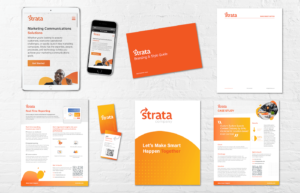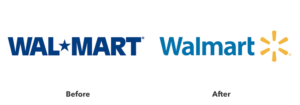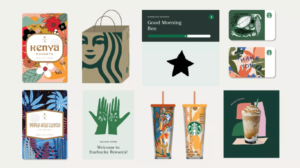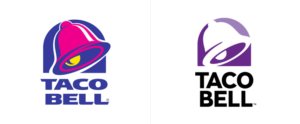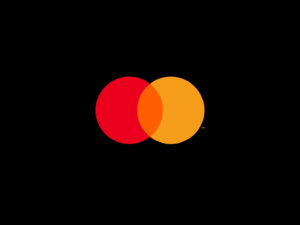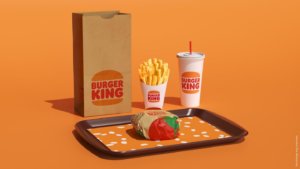What’s the Real Deal?
There’s a ton of information out there about multichannel marketing – and it can be hard to sift through. You probably often find yourself wondering, what’s real, and what’s myth? You’re not alone. Many marketers end up hindering their own multichannel efforts by believing a lot of these circulated misunderstandings, but with our help, you don’t have to. Today, we’re looking at three of the most common misconceptions around multichannel marketing, and – as experts in the area, letting you in on the real deal.
Myth 1: Multichannel Marketing is “Too Expensive”
There are a ton of marketers and organizations out there that have yet to try or implement multichannel marketing because it’s “too expensive” or “over budget”. It may cost slightly more than your generic, on-touch marketing, but it’s important to consider the benefits and weigh the cost versus the potential (and often guaranteed) ROI. There’s proof out there that many businesses end up getting much greater ROI from multichannel marketing, making the price worth it. Plus, it’s estimated that companies with optimal multichannel campaigns experience “customer retention rates of 89%, compared to an average of 33% for those businesses with weak multichannel engagement”. It’s all about how you use your budget, and allotting it to the marketing practices and programs that will yield the highest return.
Myth 2: Multichannel Solutions “Benefit Only the Customer”
It’s a common misconception that multichannel marketing is great for meeting customers at many touchpoints, but that it’s overwhelming and inconclusive for the company using it. This could not be further from the truth. Multichannel marketing is not just a one-touch process, and that’s what makes it unique and effective. Although it may seem like a lot at first (engaging with customers on several platforms such as direct mail, social, and website) it’ll be extremely helpful in forecasting and planning a company’s marketing strategy in the long run. Multichannel marketing benefits customers by providing them with relevant, personable, and consistent content, but also benefits your company by building brand awareness, loyalty, and trust within consumers and by compiling data and analytics for a complete picture of your audience’s customer journey.
Like we said, it may seem like a lot at first, but over time, you’ll get a clear picture of what channels and touchpoints work best for your company and reach the most customers, what channels and touchpoints don’t, and where and when it’s best to reach your target audience(s).
Additionally, multichannel marketing helps your employees improve customer service and build more personal and personalized relationships with customers. For example, while communicating with a customer at a certain touchpoint, your customer service representative can see exactly what contact points the customer has already accessed, as well as the information they’ve received or provided to your company. This relationship that multichannel marketing fosters not only creates less frustration and unawareness for the customer – but for the company as well. In turn, multichannel marketing reduces staff turnover, and ensures that you keep your most talented employees. It can also reduce staff errors and build a better brand reputation for your company as a whole
Myth 3: Multichannel Marketing is “Hard to Implement”
We’ve heard this one a lot. “Multichannel marketing is so involved,” or “I just don’t have time for all that.” Here’s the thing…multichannel marketing is only as hard as you make it. There are a lot of channels out there to reach your potential customers (website, in-store, catalog, e-mail, TV, text, blog, mail…the list goes on), but that doesn’t mean you have to use all of them. Plus, if you stick with your brand standards and ensure all of your touchpoints are connected and unified, you can use similar (if not the same) content, design, colors, and calls-to-action across channels, making the process much easier.
The best way to get started without getting overwhelmed is to create a plan. A great trick for quick planning is “RACE”; Reach, Act, Convert, and Engage. Make sure you’re hitting all of these parts of the process to ensure you’re connecting with and converting your audience, and getting the most out of your multichannel marketing.
Lastly, if you still feel you’re in over your head, or just really want to focus on other parts of your business, don’t hesitate to partner with experienced multichannel marketing experts. Research who you want to partner with so that you’re aware of what to expect and what they’ll expect from you in terms of budgets, end goals, and experience levels.
We hope we’ve eliminated some of your worries, answered some of your questions, and provided you with a bit of confidence in multichannel marketing. To get started on your next (or maybe your first) multichannel campaign, or learn more about how we can help, feel free to contact us.
Looking for more information on multichannel marketing and how to effectively launch a campaign? Visit our YouTube channel for quick tips and tricks from the experts at Strata.
A Strata YouTube Channel Original
Choosing the right multichannel campaign mediums can be difficult if you don’t have a good starting foundation and the right tools. That’s why, in our most recent YouTube video, we walk you through the key things to keep in mind when making this decision, and how to pick channels that best fit your company’s marketing needs.
Evaluate Your Brand & Customers, First
Before you even look at where your audience is and what they want, look at your own brand, brand voice, offerings, and then your target audience. Once you have these nailed down, then you can think about your customers – because if you understand your customers, you can understand where it’s best to communicate with them. Get to know your customers on a deeper level through data and tracking so you can develop personas and demographics, and fully recognize their pain points, wants, and needs. Test and measure tactics, update and reaudit your customer experience, ask for customer feedback – whatever you need to do to truly know your audience and therefore get the most out of your multichannel campaign. After all, 86% of customers are willing to pay up to 25% more for products and services just to have a better customer experience. Once you know your audience, then, and only then, can you figure out exactly where to meet them on their multichannel journey.
If you want to know what comes next in choosing the right mediums of communication for your multichannel marketing campaign, click on the video below and hear more from our Marketing and Social Media Coordinator Bridget. Or, if you’d like to discuss this concept with one of our multichannel experts, contact us today to get your next (or maybe even your first) multichannel campaign started.
A Strata YouTube Channel Original
We’ve all heard the saying “know your audience” before, but what does it really mean, and how will it help you plan your next multichannel marketing campaign? In our most recent YouTube video, we dive into some tips & tricks for targeting your perfect multichannel campaign audience.
Really Know Your Audience
Before you even start your campaign, you need to nail down who your audience is and why you’re targeting them. Recent surveys show that 74% of consumers get frustrated when they receive content that has absolutely nothing to do with their interests, which is the main reason companies are quickly switching to multichannel marketing campaigns – designed to be customer-centric, provide a top-tier experience, and drive high ROI. But success still comes down to how well you know your audience, which is why it’s so important to create accurate customer personas. A persona is simply a fictional character that represents the ideals and motives of your target audience. Some common (and extremely useful) research tactics to create correct customer personas are researching buying habits, consumer preferences, search behaviors, and communication methods. Don’t limit yourself to just one persona if it’s useful to create more! You can utilize several different personas depending on how diverse your target market is. It’s important to think beyond your “classic customer,” and diversify your buyer profiles.
The Buyer Journey
Outlining and creating a framework for your buyer’s journey will dramatically affect your sales. Some key questions to ask yourself to understand their journey are:
- “What purchases are being made?”
- “Where are the purchases coming from?”
- “How are they making purchases?”
These questions will help you build a premium customer experience from campaign start to finish. The more data you’re able to acquire on their buying habits/decisions, the better you’ll be at mapping out their customer journey. After narrowing down your audience, you can better source all imagery, content, and workflows they’ll come across throughout the campaign.
Want to learn more about perfecting your multichannel marketing audience? Click on the video below to hear more on this topic from our Marketing and Social Media Coordinator, Bridget. Or, if you’d like to discuss this concept with one of our multichannel experts, contact us today to get your next (or maybe your first) multichannel campaign started.
How to Take Advantage of These
Tiny Lapses of Time
In today’s digital world, whether we realize it or not, we’re surrounded by buzzwords. As we evolve and try to keep up with the newest technology and trends, these buzzwords continue to evolve as well. These terms can be intimidating if you’re new to the digital marketing realm. However, they’re usually simply better ways to understand digital strategies, tactics, and optimizations available to your company. The more comfortable you get with buzzwords, the more involved your company can be with this ever-changing digital world, especially over your competitors. In this first blog of the “Buzzword Alert” series, we’ll be breaking down a very popular buzzword – the “micro-moment.”
Micro-Moments – What Are They?
“I want it NOW” is what today’s buyers are saying during their buying journey. They want immediate gratification, and they’re making decisions faster than ever before. This moment of instant need is called a “micro-moment”; the moment of intention when a consumer turns to their device to act on a need or want. Micro-moments are intent-rich moments when decisions are made and preferences are shaped. In these specific moments, consumer expectations are higher than ever. Whether they’re looking to learn something, do something, discover, watch, or buy, they want to act in that exact moment. Since consumers are never too far from their devices and can find just about anything by the click of a button (91% of people use their mobile device to research information in the middle of a task), micro-moments are a game changer for many companies.
Why is it Beneficial to Know About These Moments?
Like we said, it’s so easy for consumers to quickly find something on their phones, giving your company the opportunity to utilize keyword research tools and social listening to help better understand where, when, and how they’re making purchasing decisions. These tactics will allow you to better optimize your products and services in real time based on your customer’s needs. And ultimately, this strategy will put you in a great spot (over your competitors) to offer more personalized content for your customers. If your company’s site pops up at the right moment and offers a buyer what they want, your brand’s performed a successful customer engagement. Maybe they’ll bookmark your page for later, send a link in a text message, watch a video, or – the end goal – buy your product.
How to Effectively Show Up in These Moments
Once you understand when and where your current and potential customers are showing up, make sure you are as well. The best way to show up and present your brand in these moments is to strategize being responsive and supportive. It’s one thing to make yourself available, but another to know how and what works best for your audience. Whether this is through a chat box, pop-up ad, or video, create a strategy that works across multiple channels so you don’t miss any potential customers. Usually, the more places you are, the better. Of online consumers, 69% agree that the quality, timing, and/or relevance of a company’s message influences their perception of that company’s brand. Make sure that when your customers are in these moments, they’re experiencing relevant content that resonates with them. Customers want deeper levels of engagement, so if you’re going to appear within their micro-moments, make your content something worth clicking on. With relevant information comes an effortless process to deliver it. Make your message intriguing yet simple to understand to minimize the chances of customer drop off. And if they do drop off – be sure to retarget. Autopilot found that brands who stay in touch with consumers every two to four weeks generate twice as many leads as brands who don’t.
See These Moments in Action
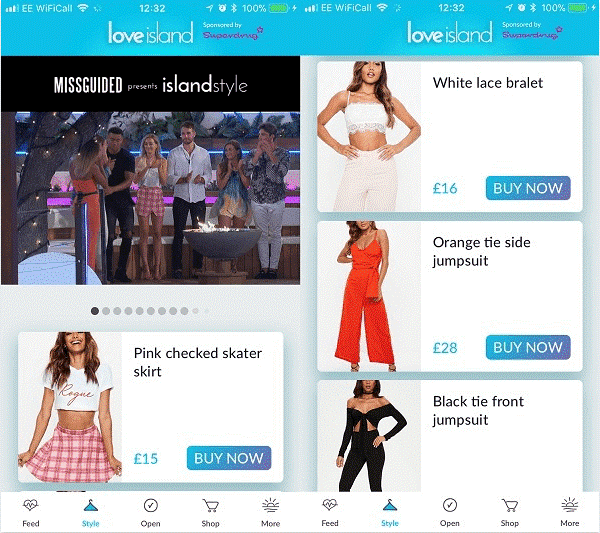
Here’s an example of relevant and easy placement. You’re on your computer streaming your favorite show and – in this moment – ads for the brand “Missguided” appears – offering relevant, related content. This clothing company’s advertising the same clothing women are wearing on the show you’re streaming. The brand’s realized that their target audience is often interested in this show, providing them the perfect moment to bring these outfits to your attention.
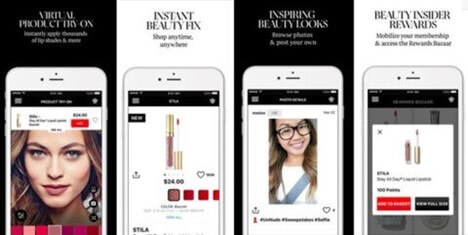
Another example? L’Oréal’s created a personalized mobile app called “Makeup Genius.” Within this app, when you take a picture of yourself, you receive customized makeup recommendations. These are rendered on the screen, and soon after, the app allows you to purchase the recommended makeup right from your phone. Here, L’Oréal both creates and takes advantage of these micro-moments of need.
In marketing, the name of the game is thinking ahead and being one step in front of your competitors and consumers. Micro-moments are all about showing up at the right time and place, with relevant and easy-to-digest information.
Interested in working micro-moments into your next digital marketing campaign? We are here to help! Contact us.
With the Top 10 (Other) Best Rebrands & Refreshes
We can’t believe we’re already celebrating the one-year anniversary of Strata’s brand refresh. It’s been quite a year (to say the least). But we can honestly say that, with all of the struggles of 2020-2021, our brand refresh wasn’t one of them. If it did anything (and it did a lot), it definitely brought us together, made us more confident, and better showcased our personality, vision, team, and solutions. The brand refresh catapulted Strata into 2020, helping us solidify our style and services, attract new talent, and stay inspired.
When we decided we needed a new look – we had to pick between a full rebrand or a refresh. For us, the answer was easy. A complete rebrand would have required scrapping our identity and starting from scratch, where a refresh allowed us to keep our main identity and strategy intact. Our brand was strong with our current clients and we had a great reputation as problem solvers and solutions experts – so a refresh was perfect for what we needed to do.
With any rebrand or brand refresh – “consistency across all channels is key”. Over the past year, we’ve ensured that all our materials – from website to print, are on-brand.
Since we now have a bit of rebrand and refresh experience under our belts, we wanted to take a look at the top 10 best company rebrands and refreshes (in our eyes) besides Strata’s, of course.
Our Top 10
Dropbox
Dropbox refreshed its brand in 2017, and it was nothing short of successful. The company worked with design studio “Collins” to create a cleaner and simpler logo and lots of illustrative elements to better connect with their primarily creative and collaborative audience.
Airbnb
Airbnb did a full rebrand in 2014 with Design Studio, sending their team of designers to 13 cities to truly immerse themselves in Airbnb’s offerings, community, and mission. It resulted in a beautiful brand that differentiated Airbnb from its similar competitors. The CEO of Airbnb even stated, “When I look at this brand, I suddenly realized everything I’ve been trying to say, now we have a way to express it.”
Walmart
“There are very few companies in the world that managed to change the public perception of their brand as successfully as Walmart did.” In 2008, Walmart made this change to get away from their “always low prices” slogan that often-made customers feel like it was also “always low quality”. They also wanted to steer clear of the questionable corporate practices they were called out for in the early 2000s. So, Walmart did a complete 360 with a whole new brand from redesigned stores to a new look and personality.
Southwest
We love this brand refresh because it reminds us of ours. Without a complete overhaul, Southwest changed its look and logo to showcase their humanity and heart – literally.
Guinness
Good old Guinness. Many love it, others don’t, but it always holds true that Guinness makes us feel like we’re back in the olden days, sipping a brew in the pub. Instead of following the crowd of flat logo designs, Guinness actually added detail to its logo in 2016, working “with real harp makers to breathe new life into the legendary logo” that “could be built into an actual harp that would work properly and be in tune.”
Starbucks
Starbucks is loved by many – and dare we say it – is mainly successful because of its brand (although we do love it a latte). They’ve made slight changes over time to the brand, always increasing their user experience and recognizability with a “distinctive color scheme, typography, and illustrations.”
Taco Bell
You may not have really noticed Taco Bell’s brand refresh until now – but its cleaner, simpler look has helped it stay relevant among its many fast food and taco chain competitors. Along with this well-done refresh, Taco Bell has been named “one of the healthiest fast-food chains in America,” so, they’re doing quite well.
Mastercard
In 2016, Mastercard conducted a refresh with Pentagram to emphasize “simplicity, connectivity and seamlessness.” It’s simple and sleek look of just the famous two overlapping circles is surprising, but logic-based. “The change follows research by Mastercard that found that more than three quarters of people asked were able to identify the brand from the two interlocking circles alone.
Burger King
For the first time in 20 years, Burger King conducted a brand refresh with a new logo, uniforms, and packaging – and we love its nostalgic look. The new logo is actually very close to BK’s logo design from the 70s-90s. The creative agency on the project wanted to “pay homage to the brand’s heritage with a refined design that’s confident, simple and fun.”
Intel
Last but not least, Intel’s 2020 refresh caught our eye because of its subtle hints to past logos. Again, it refers back to their past while being currently relevant. “This new logo includes elements of both (past logos), but in a much more subtle, minimalist way.”
To take a more in-depth look back at our brand refresh, visit our original refresh blog, here. If you’re looking to make your branding and marketing communications more effective and efficient, give Strata a call.
Get to Know These Tracking Treats
Within the world of marketing, there’s a lot of buzz around the topic of cookies and what the future holds for tracking website visitors and generating personalized advertisements. While the topic’s relevant, not many people are completely informed on what cookies are and the impact they have on our ability to create better customer experiences. In this blog, we’re going over what cookies are, the differences between first-party and third-party cookies, and the future of online tracking.
So, What Are “Cookies”?
Although many of us are “foodies” here at Strata, and could talk about a good dessert all day, this blog isn’t about Oreo or Chips Ahoy. We’re talking about web “cookies” – text files put into a user’s browser page while they’re visiting a website. Cookies are known by several names – web cookie, internet cookie, browser cookie, or HTTP cookie, but they’re all the same, and in general, they track and log browsing activity against identification data such as IP addresses. Why is this information useful? Primarily, cookies help save information about a user in order to personalize their website experience and the advertisements they’re shown.
While cookies have enjoyed a childhood free of regulation, their “free-willy” time is coming to an end with recent regulatory initiatives driven by an increase in public concern over internet privacy. The first major change came when General Data Protection Regulation (GDPR) made consent mandatory in order to track visitors on a website. To give you a feel for the impact of GDPR – about 11% of users click to “accept all cookies”, 76% of users ignore the banner completely, 12% close the cookie banner, and 0.5% of users actually open up cookie settings, read through terms and agreements, and sometimes make adjustments. These numbers are misleading, however – what GDPR essentially did was force the user to choose between viewing the desired content and accepting cookies OR (with exceptions) leaving the site entirely. So, while it looked good – almost all of the visitors in the stats above were still being tracked.
At this point, you might be thinking that we need to eradicate the cookie – if so, hold that thought. Cookies almost always make your experience on the web better – they’re your friend, not your enemy. To solve privacy concerns – which is the intent of all privacy-centric regulation – we’ll need to jump down a level. There are two major types of cookies – First-Party and Third-Party. Both contain the same pieces of data and technically can conduct the same actions, but they’re created differently, used differently, and have different benefits for distinctive situations. Let’s get into each one.
First-Party Cookies
Simply put, first party cookie technology is usually installed or authorized by a website’s owner and only tracks that user across that specific website. First-party cookies are set on the publisher’s server or on the JavaScript loaded to the website. Their defining technical feature is that, for the most part, only the domain that created the cookie can access it, thus they are seen as less invasive and are more welcomed by users.
These cookies allow website owners to collect analytical data, remember individual user settings or content (remembering what’s in a user’s shopping cart, their language preferences, or their username and password), and perform useful functions to provide better user experience. That last part is important – first-party cookies primary purpose is to deliver more relevant, user-friendly experiences to individuals. If you’d like to see the difference they make, just clear your browser cache and visit some of your favorite websites.
Third-Party Cookies
Contrasting first-party cookies, third-party cookies are not created by the domain of the website the user’s currently visiting, and therefore, can often seem intrusive and un-welcomed. This type of cookie is placed by another site, such as an advertiser or social media platform like ad.doubleclick.net – and is separate from the home domain. These cookies are usually used for online advertising purposes, and are added through a script, code, or tag to track a user across several websites. Enabling these cookies can help users see relevant discounts and catered advertisements, but can also possibly involve them in a breach of privacy. For this reason, third-party cookies are blocked by many browsers, and are currently being chastised as unethical.
Phase Out of Third-Party Cookies
In February of 2020, Google announced its phase out of third-party cookies by 2022. When this occurs, it will cause 56% of web browsers (the percentage that use Google Chrome) to block their use automatically. As stated by Google, their reasoning for forcing this phase out is to increase security and protect the user. You have to wonder, however – are ethics the driving principle here, or is this a strategic move to further corner the digital advertising market?
All-in-all, this change won’t make as much of a difference as you’d think, as a 2017 study showed that 64% of tracking cookies were already being blocked as users surfed the web. Those at Google seem to think that third-party cookies will not be replaced by another resource due to increasing privacy concerns, but they’ll continue to “support first-party relationships on our ad platforms for partners, in which they have direct connections with their own customers.”
What’s Next for Cookies?
No matter what the circumstances with third-party cookies, first-party cookies are definitely here to stay. If configured correctly, they’ll continue to function within most browsers – even if those browsers block third-party cookies. So – fear not – first-party cookies will provide marketers hindsight and insight on your website visitors for the foreseeable future – even if you might now be forced to use Google to reach them.
Now that you know a bit more about cookies, you may be motivated to improve and optimize your next digital marketing campaign. If so, contact us today.
Best Practices & Use Cases
What We’ve Learned (So Far)
In Part 1 of the Omnichannel Marketing 101 Series, we went over exactly what omnichannel marketing is, not only including its actual definition, but how it differs from multichannel marketing, its importance, and examples of when, where, and how it’s used. In Part 2, we outlined the steps to getting started on an omnichannel campaign. From those two blogs, we hope you’ve seen that omnichannel marketing’s an excellent way to gain and retain customers, and that it’s maybe not as intimidating as it sounds, but does require research, planning, focus, and sometimes, a team of experts like us!
Now, we’re giving you the inside scoop and sharing just a few of our secrets (yes, our secrets!) on best practices for creating an omnichannel campaign that powers a unique customer experience and cultivates company success.
What Industries Can Benefit from Omnichannel Marketing?
One of the many reasons omnichannel marketing is so popular is because of its versatile nature. It can be used in many different ways across several industries. Here are just a few we’d like to highlight…
Telecom
Omnichannel marketing is often used by the telecom industry to conduct various tasks, such as helping customers make payments and send out new launch notifications. As a result, telecom companies can quickly boost revenue and drive engagement.
Travel
Travel agency customers go through numerous stages in their customer journeys. Omnichannel campaigns can help promote travel accommodations, send reminders about upcoming flights and delays, deliver other announcements, give out deals for restaurants, stores, and hotels, and keep an open line of communication that’s easily accessible to the customer.
Banking
There are several ways banks can use omnichannel marketing – from reminding their customers about impending bills and other costs, to providing account balances, and promoting new features or products. It streamlines their services and allows them to offer multi-device experiences that often save the customer time (and improves their patience).
Healthcare (Our Specialty)
Strata has helped many healthcare companies acquire and retain customers using smart and successful omnichannel campaigns. Marketing campaigns can be tough to create and execute in a highly regulated industry like healthcare, but omnichannel marketing has taken off, and more and more healthcare companies are utilizing it. Healthcare companies can use omnichannel campaigns to reach new movers in their area, connect them with physicians, send out appointment reminders, provide additional access to portals…the possibilities are kind of endless.
With all of that in mind, you can see why businesses that create and conduct omnichannel strategies have 91% greater year-over-year customer retention rates. So, even if you’re in a different industry than the four above, you don’t have to miss out. Read on to learn more about the best practices for creating successful omnichannel campaigns…
Creating the Perfect Omni-Strategy
When planning out an omnichannel strategy, it’s most important to research, collect data, and, well…thoroughly plan. Not only do you want to research and keep in mind the customer base you’re targeting, but you’ll want to examine how your customer base will experience each channel, and carefully prepare the different messages you’ll want and need to communicate to them. Like we said in our second blog of the series, knowing your customers inside and out is key to a successful omnichannel campaign. Learn their demographics, environments, behaviors, habits, and even their goals. Use analytics and CRM data to get to know your customers’ behaviors and actions. Make sure to personalize your omnichannel campaign by segmenting this audience based on your acquired data and the journey they’ll take.
On a related note, always be customer-centric. Make sure your team understands the value of consistent messaging and experiences, and is well trained, because “different customers will interact in different ways with your brand, and there is no one way to do it”. Have staff ready to not only provide assistance, but to welcome new customers, consistently engage them in new ways, and turn them into advocates of your brand with, like we said, consistent communication and customer experiences.
Don’t forget to get content (and context) right. Make sure your messages are relevant and timely. Engaging with your customers at the wrong time with irrelevant information can very easily turn them off from your brand. Communicate with customers at the most pivotal touchpoints, “from identifying and understanding a need to researching solutions, comparing products, and making a decision”. Engage with your customers when it’s applicable to them, not just when it’s best for you. Utilize CRM software to stay aware of your customers and “maintain consistent, personalized messaging with customers on whatever channel they reach you on”. Meet them where they are with a message that sparks their interest and answers any questions that they may have about your business or service. And when you can’t be there 24/7, use automation to share content, send confirmations and reminders, and communicate in other ways when triggered to.
And, maybe most importantly in our opinions, always review your metrics (which can include conversion rate, customer acquisition or retention, social media engagement, click-through rate, and more) and revise as needed. An omnichannel campaign isn’t about setting it and forgetting it, but always reviewing and improving, so set milestones for you, your team, your marketing, and your brand.
The best way to perform all of these best practices is having the right tools. Like we said, CRM technology is an excellent way to store data, keep track, and communicate. If you’re a commerce-based company or service, it’s also a good idea to use a POS system so that all of your data is stored in one place. With a POS system, you can also more easily track customer behaviors and “provide them with conveniences like remembering their passwords, storing payment information, and suggesting relevant products”.
We’ve Got You Covered
If you’re thinking this is a lot to take on all on your own, we’d recommend partnering with a knowledgeable company with a staff of omnichannel experts (like us!). Strata can help with everything omnichannel – from data sourcing to execution and production.
Think you could use our help? Feel free to visit our site or give us a call.
Understanding How it Impacts Everything from Customer Acquisition to Back-office Operations
Industries are shifting, whether that’s a demand for goods and services, the way we deliver those goods and services, or new emergences in the way we do business. This is true for every business, including grocers.
Let’s take a look at some of the drivers shifting industry standards and how we can leverage one specific driver to create better opportunities for grocers.
Three Drivers of Retail
1. Shifts in Consumer Expectation
There’s perhaps nothing that changes more constantly than consumer expectation, and in the era of home delivery and subscription meal prep services, consumer demands are varied, and quite frankly, challenging.
Consumers expect the ability to buy anything, anytime, and from anywhere. Finding ways to cater to these new expectations is a major driver of business for grocers.
2. Stiff Competition and the Emergence of Ecosystems
An even more pronounced trend is the sheer level of competition that’s out there. Grocery chains are collapsing under the pressure of large-scale competition and the emergence of ecosystems. A great example is Amazon purchasing Whole Foods and using the Amazon infrastructure to fold Whole Foods operations into its business model.
3. Technology
The last driver for grocer-specific retail is technology. As technology advances, it opens doors to help grocers better compete for the attention of consumers. With the introduction of AI, advance analytics, and IoT, grocers have more capability than ever to analyze and connect with consumers.
Technology, more than any of the other three drivers above, can stand out as a primary factor in operational effectiveness with the ability to reduce overall cost in the value chain.
This is particularly true in the realms of customer acquisition, customer engagement, commercial effectiveness, and warehouse/back-office operations.
Customer Acquisition and Engagement
When it comes to technology’s role in customer acquisition and engagement, the benefits are obvious. Better analytics leads to better targeted messaging across multiple delivery vehicles, such as digital ads.
Technology is also crucial to creating highly targeted and hyper-personalized offerings, enabling grocers to connect with consumers on a more specific level, resulting in better customer acquisition, engagement, and loyalty.
Another area of advertising where technology plays a crucial role is in enhancing digital direct marketing properties, like the addition of promotional QR codes attached to emails or digital coupons.
Commercial Effectiveness
Technology can also help grocers maximize their commercial effectiveness by using advanced analytics to make better choices. These choices can include everything from the products grocers carry to the way they’re priced.
It can also help in making decisions related to promotional initiatives, helping to take the guesswork out of what promotional offers to run.
Operational Efficiency
One of the most appealing aspects of heavy technological integration within grocer systems is the potential for higher efficiency in day-to-day operations. Technology opens the door to automating warehouse functions, as well as in-store and back-office operations.
Why it Matters
If there’s nothing else to take away from this article, let it be this: technology allows you to compete for business in a market driven by choice, increasing existing customer loyalty, and driving customers to physical stores instead of online ordering sites.
These three benefits make it imperative that grocers embrace technological solutions for many of their day-to-day operations and needs. In an era so heavily dependent on technology for communication and promotion, without it, grocers will fall behind.
Interested in learning more about the role of technology in the value chain for grocers? We have the tools that can help ensure your tech is where it needs to be.
Whether that means operational efficiency with an MRM system or acquiring new customers with our SmartMove, new mover program, contact us to see what Strata can do for you.
Understanding the Ins and Outs
MarTech – we throw around the term as if it’s universally understood, but plenty of people aren’t entirely sure what it is, exactly.
Don’t panic. That’s normal.
We don’t have to tell you that technology is playing an increasingly larger role in all businesses, and MarTech (Marketing Technology) is simply an extension of that — it’s a catch-all term referring to any piece of software designed to make marketing easier.
Here are some quick examples:
- Software tracking promotional use of coupons
- Automated email campaign software
- Social media automation
The answer to “What is MarTech?” essentially boils down to this: MarTech is any piece of software that executes a marketing process so you don’t have to.
The Progression of MarTech
Think of the progression in the same way we experienced the evolution of apps for our smartphones. What started as a few hokey, low function tools exploded into everything from day trading platforms to photographic check deposits and real-time delivery tracking.
In much the same way, MarTech has boomed and currently offers a precise solution for nearly every need of the modern marketer.
MarTech’s Role Today and Tomorrow
A hallmark characteristic of the most successful marketer is their willingness to embrace and utilize new technology.
Smart marketers embraced MarTech early, and since its inception, MarTech solutions have become an absolute industry standard. These types of MarTech have typically been focused on a few core functionalities, like automating emails and processing the data into easily digestible reports.
While many MarTech tools, like MailChimp or Hootsuite, have asserted themselves as a consistent presence in the marketer’s toolbox, a new era of MarTech is on the horizon. Technological enhancements, like AI and machine learning, are honing the cutting edge of MarTech capabilities.
This incorporation of advanced tech means powerful new tools, like AI-fueled CX marketing, more adaptive lifecycle marketing solutions, better conversational marketing, and more precise data-driven marketing. These are all tools to market like never before, redefining what it means to be a marketing professional and deeply, inseparably linking our jobs with MarTech.
Exploring Our Options
One advantage of modern times is the seemingly limitless options we are presented every day, whether that be shopping on Amazon or unlimited streaming packages. We’re simply spoiled by choice, and MarTech is no different.
Over a diverse range of needs, like CRM MarTech, Web Analytics MarTech or SEO MarTech, there are literally thousands of (7,040 to be exact) MarTech solutions geared towards each and every niche of the marketing spectrum.
There are so many options, it can even be a little intimidating.
To simplify our choices, we can look at this handy Periodic Table of MarTech. It outlines 24 main subcategories of MarTech software and services providers within those categories. So, if you’re trying to decide what MarTech is right for you, this is a great place to start.
Benefits of MarTech
The primary reason MarTech has become an industry standard is simple: MarTech gets results.
Let’s look at an Ascend2 report on MarTech’s performance in the workplace.
Ascend2’s surveys suggest that 87 percent of marketers believe that MarTech is improving performance in their organization. In the same report, 67 percent of marketers thought that their organization could benefit from introducing more MarTech. This shows that MarTech is an advancement welcome across the board and the level of integration into the day-to-day workflow will only increase.
What’s Right for Me?
The simple answer is that your demands will dictate the right MarTech for you — identify useful tools and ignore ones without obvious practical application.
What is really important — and what we want to stress here — is what not to buy, and that is anything that does not have a proven functionality within your organization. MarTech can be expensive and with so many good options available, there’s no reason not to invest in anything less than ideal solutions.
That said, there is something out there that’s right for you — MarTech is one of the most exciting things to happen to business in a long time, it’s proven and it’s here to stay.
The only question is how you’ll embrace it.
Are you interested in creating or adding to your existing MarTech stack? Contact us to see if our cloud-based MarCom solutions are the right fit for you.




